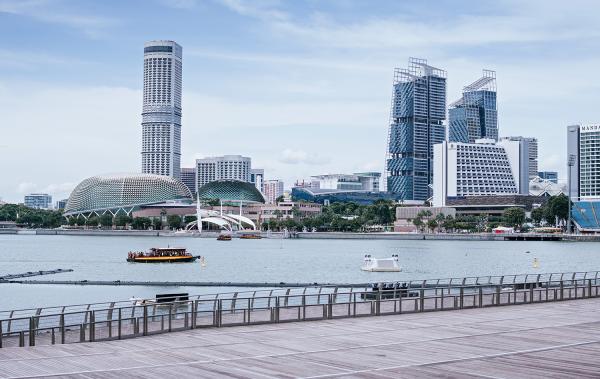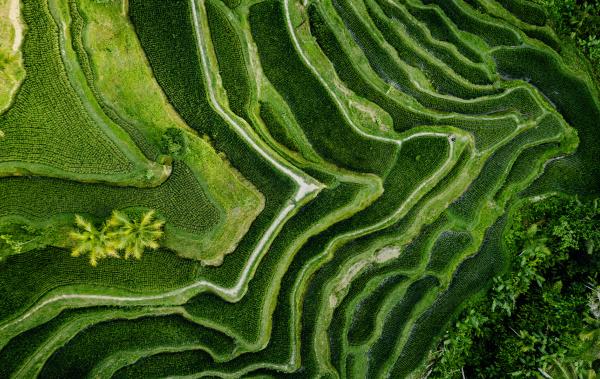Réunion des musées nationaux – Grand Palais brings children and art together through the program Histoires d’art des Petits
Inside Ardian
Réunion des musées nationaux – Grand Palais brings children and art together through the program Histoires d’art des Petits
-
29 November 2023
-
Ardian Foundation
Reading time: 6 minutes
The Ardian Foundation has supported this innovative program since its inception in 2022.
A chorus of howls breaks out in the corner of a classroom. Far from trying to quell the chaos, the educator encourages her pack to make even more noise: the children are taking part in a body language workshop and are exploring the theme of wolves under the guidance of a facilitator. The event is part of the first session put on by Histoires d’art des Petits (Art History for Children), a program created by the Rmn-GP to promote access to culture for children.
The ambitious program is under the purview of the Rmn-GP’s Mediation and Education Unit, one of whose tasks is to serve the needs of early childhood educators who are also committed to promoting cultural rights. Histoires d’art des Petits uses Animals in Art, one of the six educational kits produced by the Rmn-GP and organized around broad art history themes, including Portraits in At, Landscapes in Art and Animals in Art. Employing a range of diverse activities, the kits promote innovative ways of learning geared to make children more art-aware through playing, seeing and emotional engagement.
Mathilde Delanne explains: “The program is built around artistic curiosity. What is a sculpture? What is a painting? What are the differences between periods, cultures and so on?”
We want children to put themselves in the shoes of the artist. It is a program that is very open to the arts with everything that they have to offer, both physically and creatively.
A four-stage approach to unlock a wealth of discoveries
A four-stage approach to unlock a wealth of discoveries
In stage one, the kit’s games and activities give the children an opportunity to tackle cultural and social issues, such as “unloved animals”, “endangered animals”, or “forest animals”. Through cultural learnings, vocabulary expansion, and imagination building, this initial stage lays the groundwork for the rest of the program.
Next, an Rmn-GP facilitator comes to meet the children. This is a time for valuable discussion. Active participation is encouraged and builds on the first animal-centered session, which broached topics such as the environment, preconceptions, and nature. This stage is also designed to lay the foundations for the third stage, which is all about meeting the artworks. Museum visits and cultural outings give the children the chance to come face to face with actual works of art, further bedding in the concepts introduced in the initial two stages.
A creative workshop marks the culmination of the program and the final stage in the journey. Working with an artist, the children revisit the earlier stages and create their own art. Whether engaged with plastic arts, dance, music, or another medium, the budding artists bring a variety of techniques and multi-sensory tools to bear, unleashing their creativity, skill, and imagination. The art created during this moment of collaborative creation is displayed in a joint exhibition, enabling each group to look back over its own journey and share those of others. This is a critical stage for the children, and the opportunity to involve the families.
From imagination to equal opportunities: the many benefits of cultural practices
From imagination to equal opportunities: the many benefits of cultural practices
According to Mathilde Delanne, the Histoires d’art des Petits project goes well beyond artistic education. “Children at this age are always experimenting, trying out new things. For them, everything is an experience. These activities are a way to develop culture, foster curiosity, build vocabulary, and nurture imagination. They have a real impact on children’s sensitivity and personality growth.”
There is lots of research to show that creativity and artistic practices are vital in the early childhood years. They encourage the development of prosocial behavior – independent actions, such as helping, comforting, and sharing, that are designed to benefit the well-being of others. These actions also support children’s cognitive development and problem-solving ability, helping them to become positive participants in the promotion of social harmony.
Mathilde Delanne argues that these effects are further supplemented by a tangible social benefit:
Working in an organization like ours, you become aware of how cultural inequalities develop into inequalities at school, which then perpetuate and deepen social inequalities. By engaging at an early stage with very young children, we can narrow the gaps and hopefully these equalities will lessen over time.
Dedicated support for educators too
Dedicated support for educators too
Histoires d’art des Petits collaborates with schools conducting their own initiatives to support children and foster their well-being. This cooperation is a fertile ground for the program: by sharing skills and best practices, the partners make sure that children make the most of the lessons on offer. But none of this would be possible without buy-in from teacher teams. To ensure this, a co-construction process gets teachers involved in every stage of the program, including through training on using the kits. In this way, the project acts as an interface between educators and cultural professionals.
The productive dialogue between everyone involved in Histoires d’art des Petits will be used to improve the program year by year, explains Mathilde Delanne. “Teachers have warmly welcomed the project and its design. We got off to a good start and we plan to build on that.”
This project may also act as a springboard to create new facilities catering to very young children and housed within cultural venues, particularly the Grand Palais, as soon as it reopens.
Taking things to the next level with an expanded target group
Taking things to the next level with an expanded target group
After a hugely successful first year in Paris proper, Histoires d’art des Petits will expand its target audience in its second year as it is rolled out in Drancy in the Seine-Saint-Denis department. Further out, the plan is to deliver the program outside the capital region, starting in Saint-Dizier, in the Haute-Marne department.
The sky is the limit for this experimental project. Detailing her goals for the future, Mathilde Delanne says:
We are fortunate to have a long-standing core partnership with the Ardian Foundation. For a decade, the Foundation’s support has allowed us to offer projects that go far beyond what we could have achieved by ourselves.
“We are putting our professional skills to work for children, and we feel very fortunate to be able to do it with partners who share our values and aspirations.”
Learn how the Ardian Foundation's mission has evolved to focus on early childhood projects



